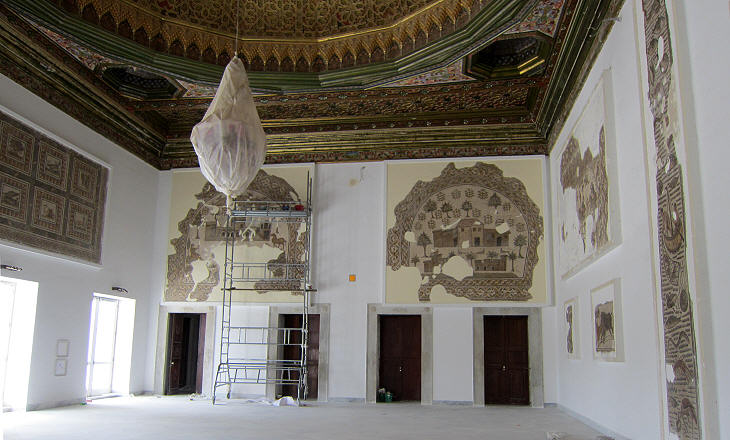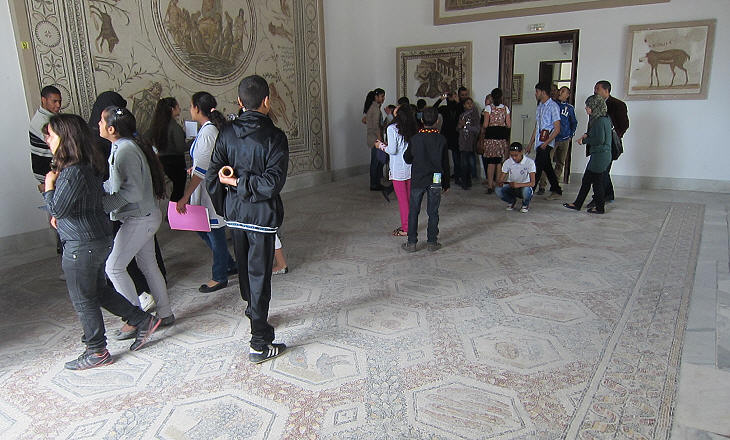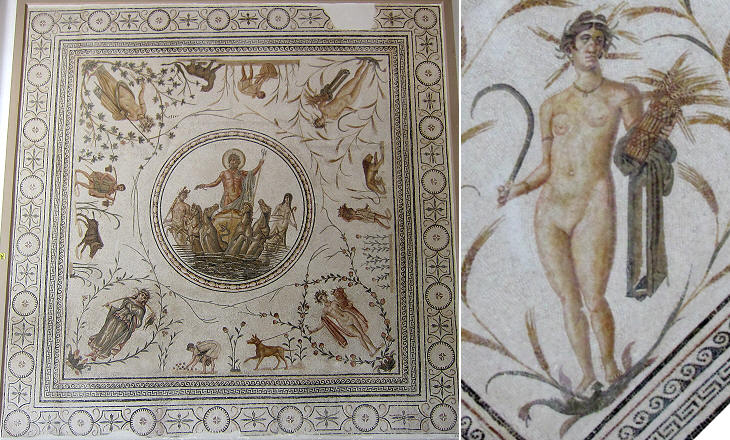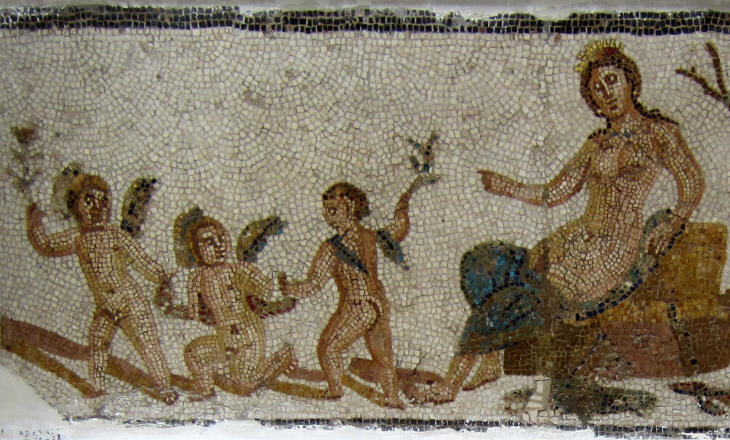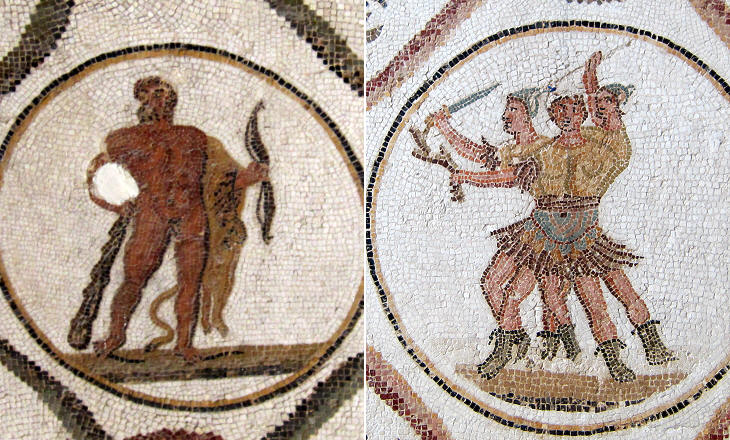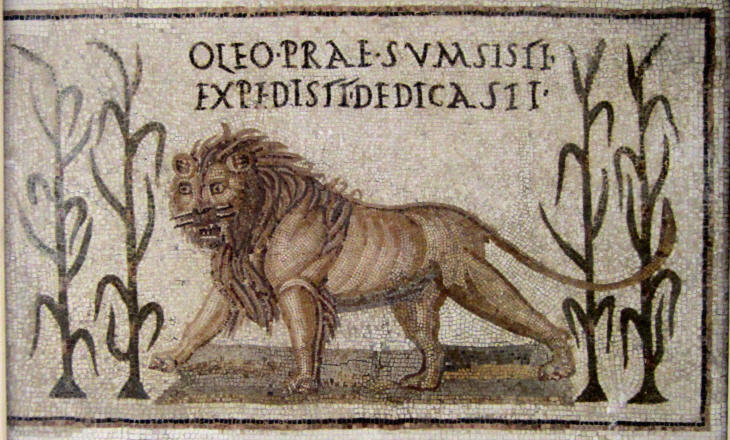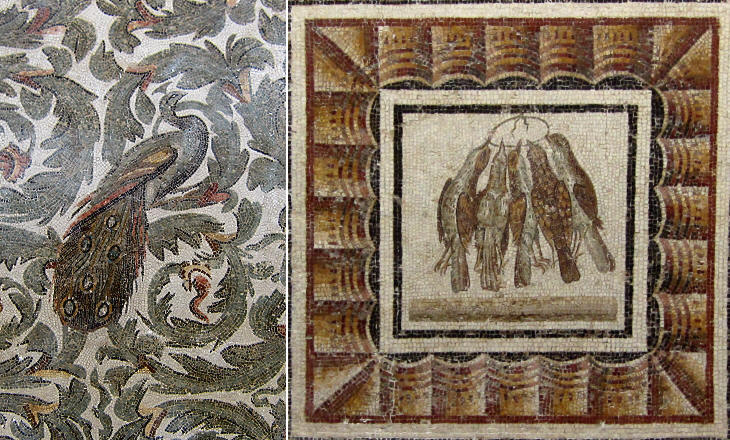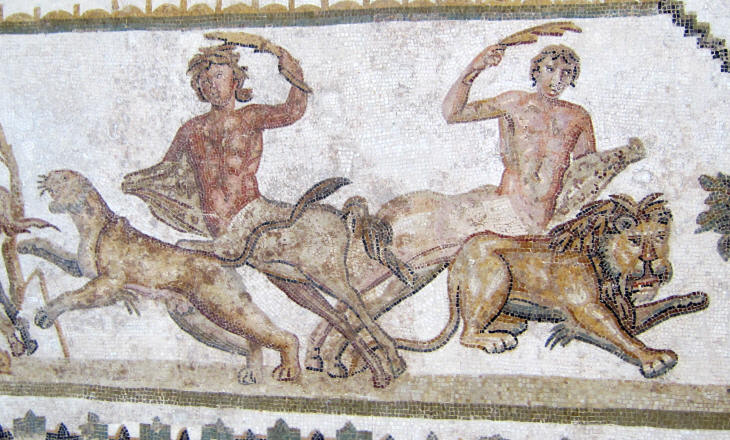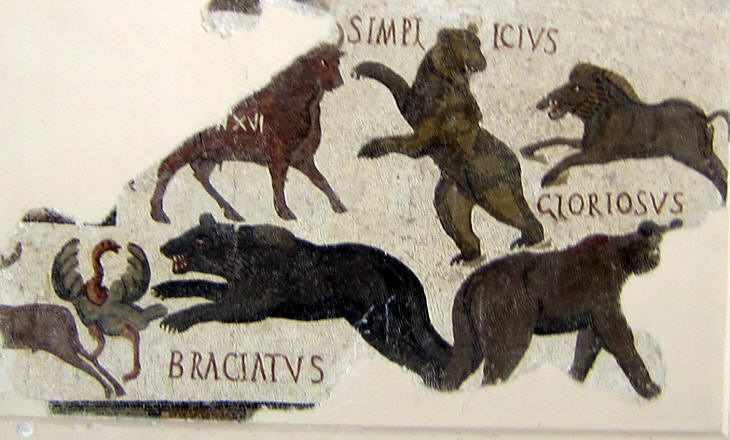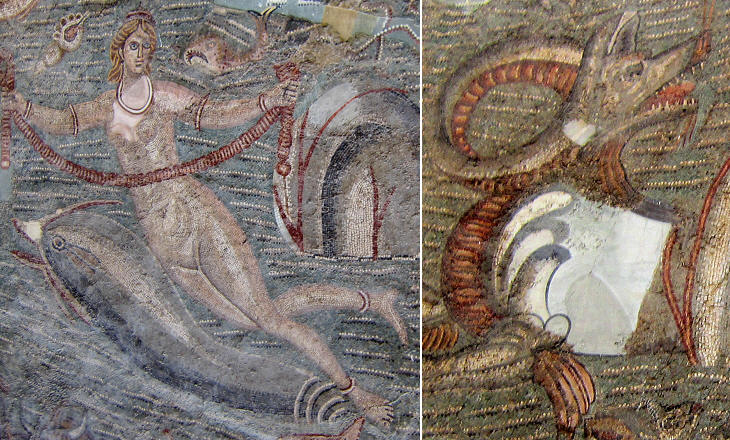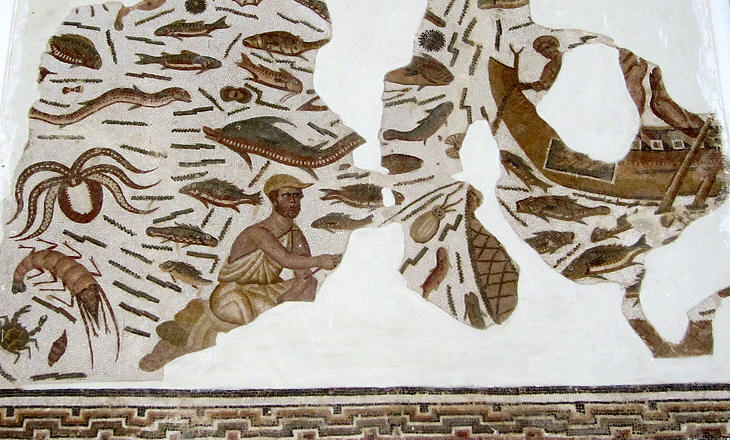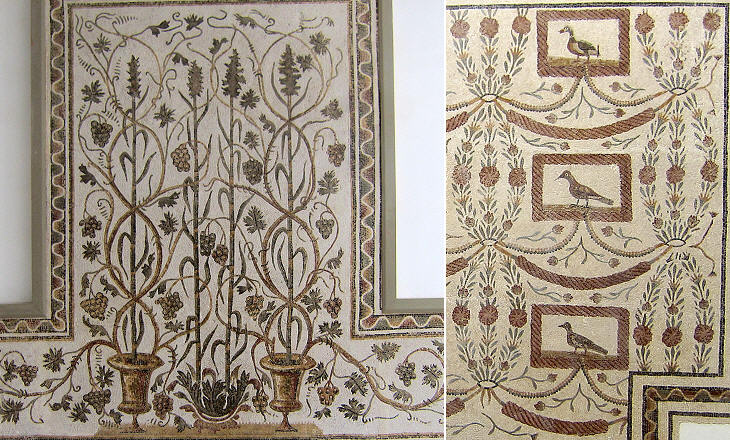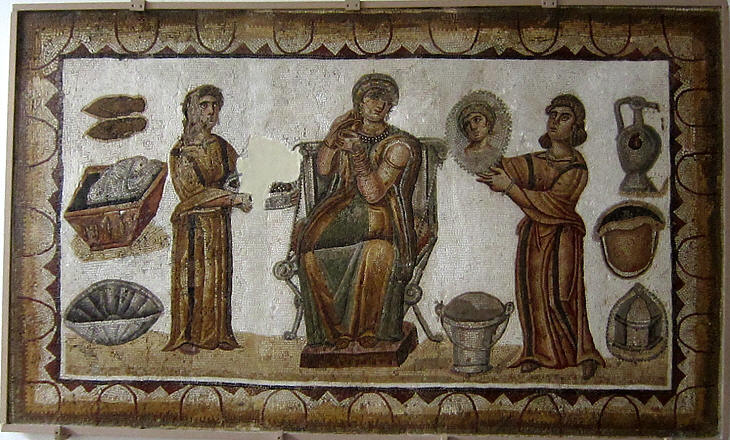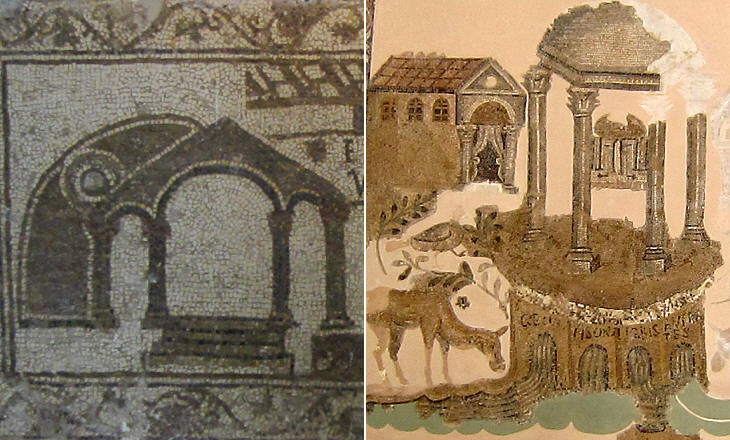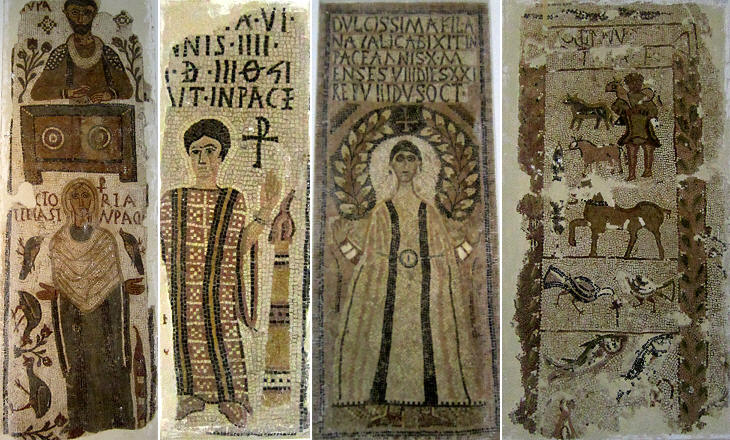  What's New! Detailed Sitemap All images © by Roberto Piperno, owner of the domain. Write to romapip@quipo.it. Text edited by Rosamie Moore. Page added in September 2012. |
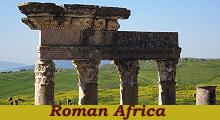 - Roman Mosaics at the Bardo Museum - Roman Mosaics at the Bardo Museum(detail of the theatre at Thugga) The Palace Between 1705 and 1881 Tunisia was ruled de facto by the Husaynid Dynasty which was founded by an Ottoman officer. From a formal point of view the Bey (civil governor) of Tunis acted on behalf of the Sultan of Constantinople, but when in 1881 the French imposed their protectorate over the country the Ottoman Empire did not react and it just strengthened its garrison in neighbouring Tripolitania. The Beys lived at Bardo, a separate quarter on a hill to the south of the city where in the XIXth century they built a series of palaces in a mixture of European and Moorish styles. The treaty by which Mohammed el-Sadik Bey accepted the French Protectorate was signed at Bardo.
Close to these public apartments is the Old Harem which is now repaired and utilised as a museum, under the direction of M. de la Blanchere. It was opened on the 17th May 1888 under the name of Musée Alaoui. The halls are of great size, very handsomely painted and gilt, and the walls covered entirely with tiles of native manufacture, but of European design. The Grande Salle is an immense rectangle, 19 metres by 16, surmounted by a dome, gilt and painted in the best style of Arab art. On the floor is the great Mosaic from Susa, 160 metres square, one of the finest which exists in any country. It represents Neptune in his chariot surrounded by fifty-six medallions of gods and goddesses, each set in a beautiful garland of foliage. From 1895 Murray's Handbook for travellers in Algeria and Tunisia.
Roman mosaics were made to be walked on, but not by crowds of people wearing shoes, nor they were expected to be cleaned with modern detergents. In 2009 Tunisian authorities have started a major upgrading of the museum which includes new premises able to house very large mosaics on their walls and to provide them with appropriate lighting, a major issue in the current set-up. In April 2012 work was still going on and some of the exhibits (which are not limited to mosaics) were not accessible. Some of the Finest Mosaics Some images of mosaics and statues of the Bardo Museum are shown in the pages of the towns where they were found (e.g. the mosaics of the House of Ulysses and Dionysus are in the page covering Thugga).
The making of a mosaic was a result of teamwork; in general mosaics had a large decorative, often geometric, frame surrounding a small section with figures (emblema) which was executed by pictor musivarius, a more skilled artisan who received a higher remuneration. Only very wealthy owners could afford to have the whole mosaic executed by pictor musivarius. The wealth of Roman Africa was based on farming and the Four Seasons were a perfect subject for showing the various phases of agricultural works. In this respect Neptune was a symbol of fertility. For the Romans he was more the god of fresh water, including rain, than of sea. quidve, pater Neptune, paras? Wow, why so many clouds surrounded the sky? What are you preparing father Neptune? Virgil - The Aeneid - Book V
Venus, the goddess of beauty, was among the most popular subjects. She was often portrayed at her toilet (Bulla Regia) or being crowned (Carthage). In these cases the mosaics were very complex, whereas in the example shown above the scene is very simple. It is a mosaic which is eye-catching because of the colouring effect obtained with a limited number of tesserae, the stones used in the mosaic. The execution of a mosaic was preceded by an accurate classification of the stones by their tints; pictor musivarius did not have much time to do his work and he needed to find the tesserae with the appropriate shade of colour quickly. The figures are portrayed on a white background, but cupids have shadows.
The Twelve Labours of Hercules were an excellent subject for a large mosaic, as well as for the decoration of buildings as at Basilica Severiana at Leptis Magna. In the Tenth Labour Hercules fetched the cattle of Geryon, a giant with three heads, six arms and six legs who lived in Spain. Hercules killed him by shooting three arrows. Hercules stopped at the site where Rome was eventually founded on his way back to Greece.
The Province of Africa was home to the Barbary Lion, a subspecies of lion which became extinct in the wild in the early XXth century. A symbol of strength and power, the lion (Latin leo) became a given name during the Late Empire (it has been the name of six Byzantine emperors and thirteen popes) and this explains the inscription on the above mosaic which celebrated the construction of baths.
A Roman house at Carthage is called Villa of the Aviary because of a large mosaic depicting birds. Peacocks were a very decorative subject and in some cases their feathers were depicted on their own to form an ornamental pattern as at Thysdrus. The mosaic portraying game was most likely situated in a triclinium, the dining room of the ancient Romans, to show the range of food enjoyed by the owners of the house and as a sign of hospitality.
Complex scenes of fights involving Greek heroes, Amazons and centaurs were a popular subject for sarcophagi, but not as much for mosaics where they were rarely portrayed. Scenes laid on a floor ought to be rather simple because viewers saw them from awkward angles. This is a reason for the plain backgrounds of many mosaics.
Venationes (hunts) were the most typical shows performed at an amphitheatre. The fact that the beasts shown in this mosaic were identified by a name indicates that these shows, especially during the Late Empire, were similar to circus performances and did not entail the killing of the beasts. In the same way gladiatorial fights were usually bloodless.
The sea with its mythical and real creatures was another preferred subject for mosaics as it can be seen at other locations of the Roman Empire such as Antioch and Ostia. The image used as background for this page shows a fragment of a mosaic portraying the head of Oceanus.
Roman sculpture is best known for the likeness to reality of its statues, unlike the Greek ones where subjects were idealized. This interest for real things transpires from the accuracy by which sea creatures are depicted in Roman mosaics. The sea of the mosaic above is not populated by elegant dolphins, but by a catalogue of creatures which resembles an illustration of an old encyclopaedia. The mosaic shows fishing as an "industrial" as well as a recreational activity. See another mosaic showing an angler at the Museum of Tripoli.
After the declaration of the Tunisian Protectorate, French authorities started a systematic survey of the some 200 henchir, (sites with ancient ruins) listed by Victor Guèrin in Voyage archéologique dans la Régence de Tunis - 1862. The number of mosaics which were discovered was so high that as a general rule those regarded as merely decorative ended on the floors of the Museum of Bardo and only a few of them on its walls. Christian Mosaics
The Museum of Bardo has a separate section on Christian art; the mosaic above shows the influence of the new faith on traditional mosaics. It was found in the hall of baths and yet all nudity is banned. The subject is the Toilet of Venus, a very popular one, but a matron replaces the naked goddess. The depiction of the utensils used at the baths makes the scene still and the servants seem to look elsewhere, but the matron gazing at herself in a mirror would have thrilled a Flemish painter.
Most of the mosaics in the Christian section decorated small funerary monuments; that on the left shows "Mother Church", but most likely the actual church where the dead used to attend. The mosaic on the right comes from a church. It is rather small and it was placed at the entrance of a martyrium, a funerary chapel. It depicts a round church built on the site of the Crucifixion of Jesus Christ; from the rock underneath four rivers flow, a symbol of the new faith from which believers (represented by does) drink.
In general the inscriptions on Christian gravestones were limited to the name of the dead, the age and the formula vixit in pace (he/she spent a peaceful life). The grieved parents of Natalica made an exception for their daughter who lived ten years, eight months and twenty-one days and called her dulcissima (sweetest). The inscription has another interesting aspect: the use of b instead of v in bixit in pace, an effect of Byzantine influence because in Greek b sounds as v.
Around 400 St. Augustine, Bishop of Hippo Regius (today's Annaba in Algeria), stopped at Bulla Regia on his way to Carthage. In a sermon he exhorted the citizens of the town to close their theatre and amphitheatre and to ban prostitution. The Christian disapproval of entertainments however did not include races in the circus which at Constantinople acquired extraordinary importance even from a political viewpoint. The mosaic above shows that the same occurred in Africa and that circuses continued to attract crowds even at Capsa (today's Gafsa), a town in southern Tunisia the inhabitants of which resisted the process of Arabization for centuries and continued to speak Latin. Move to: Introductory Page Bulla Regia Carthago Mactaris Musti Neapolis Sicca Veneria Simitthus Sufetula Thugga Thuburbo Majus Thysdrus Uthina Utica Ziqua  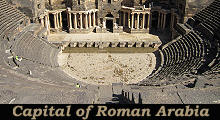 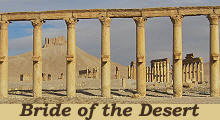 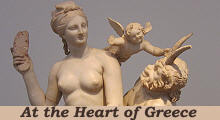
|
